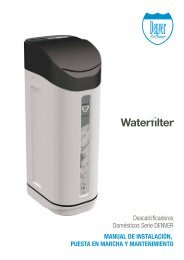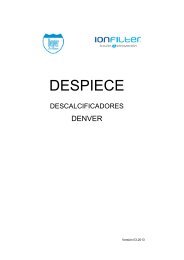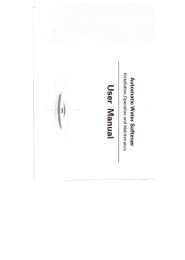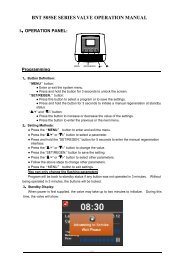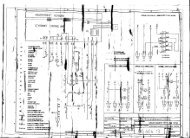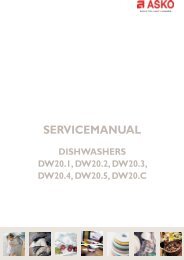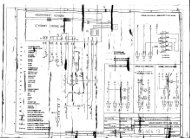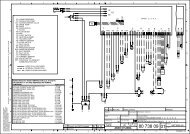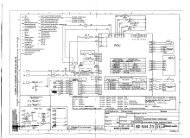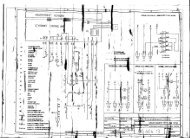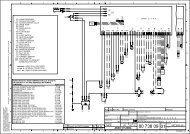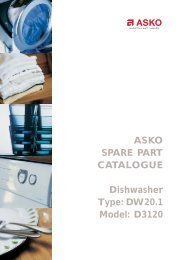MU_STRATOS_ENG_HI
Create successful ePaper yourself
Turn your PDF publications into a flip-book with our unique Google optimized e-Paper software.
8. Maintenance / Hygienisation<br />
7.3 How to Check Hardness<br />
To measure water hardness with the analyser (code 271800)<br />
follow the instructions below:<br />
1. Fill the clear recipient with the water you want to analyse<br />
until the checkmark.<br />
8. MAINTENANCE AND<br />
HYGIENISATION<br />
YEARLY<br />
In order to guarantee the proper operation of the system, the<br />
following verifications must be carried out as frequently as indicated:<br />
VERIFICATION<br />
Check the salt level in the tank:<br />
Check inlet hardness:<br />
Check treated water hardness:<br />
Hygienisation:<br />
Anti-scaling:<br />
Cleaning the salt tank:<br />
Technical Service verification:<br />
FREQUENCY<br />
Monthly.<br />
Monthly.<br />
Monthly.<br />
Yearly.<br />
Yearly.<br />
Yearly.<br />
Yearly.<br />
2. Add two drops of A reagent and shake carefully.<br />
2 A-DROPS<br />
It is very important to carry out the hygienisation and anti-scaling tasks<br />
separately, since the chemical products used for this purpose could have a bad<br />
reaction when mixed. The hygienisation and anti-scaling tasks must be carried<br />
out by turns, according to the indicated frequency.<br />
SALT FILLING<br />
The salt level in the tank must be frequently checked. The minimum<br />
salt level must be kept, which corresponds to a third of<br />
the tank volume. If salt runs down before filling it up again, the<br />
system will produce hard water. After the verification, check<br />
that the salt deck is properly closed.<br />
3. If the sample turns blue, it means that water is fully softened,<br />
but if it keeps a red colour, it means it has some hardness.<br />
4. Slowly add more drops of B reagent until water turns blue.<br />
The quantity of used drops corresponds to the hardness in<br />
ºHF of the sample.<br />
DROPS UNTIL TURNING BLUE<br />
NOTE: For humid areas, it is recommended to keep a lower<br />
salt level, filling it up more frequently.<br />
RECOMMENDED SALT: Thick salt in tablets or balls containing<br />
less than 1% of impurities.<br />
NOT RECOMMENDED SALTS: Salt stones, salt with impurities,<br />
in blocks, granulated, in bars, or that used to cook.<br />
HOW TO BREAK A SALT BRIDGE<br />
Sometimes a salt bridge can get formed inside the salt tank.<br />
This is due to a high level of humidity or to the use of an<br />
inappropriate salt. When there is a salt bridge, there is an<br />
empty space left between water and salt which prevents it<br />
from dissolving. This means that the water softener will not<br />
regenerate properly and supply hard water.<br />
21




